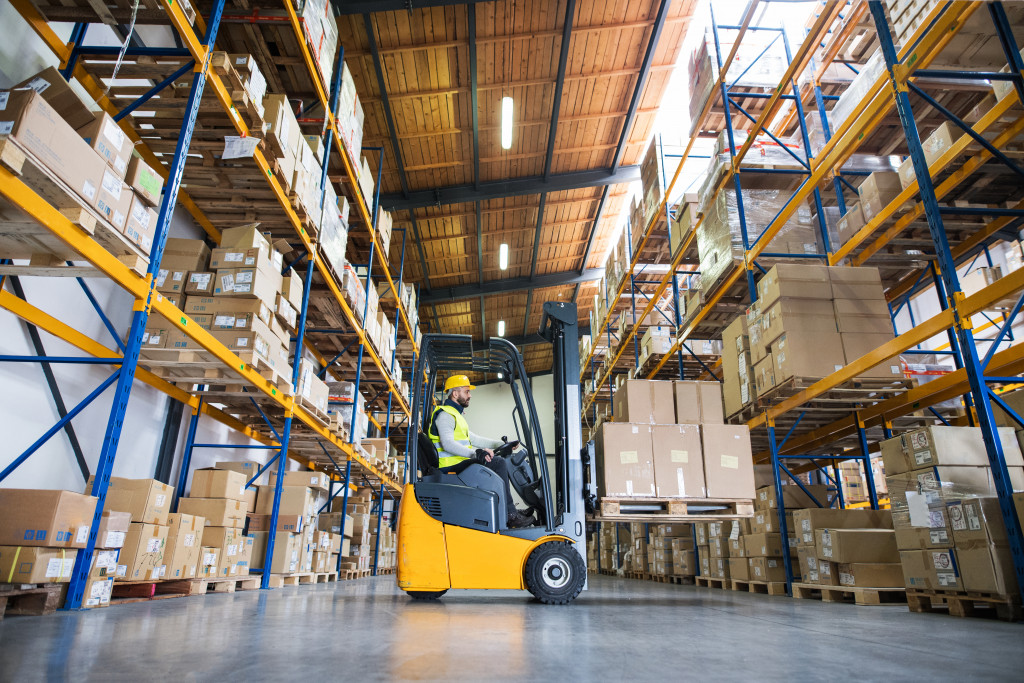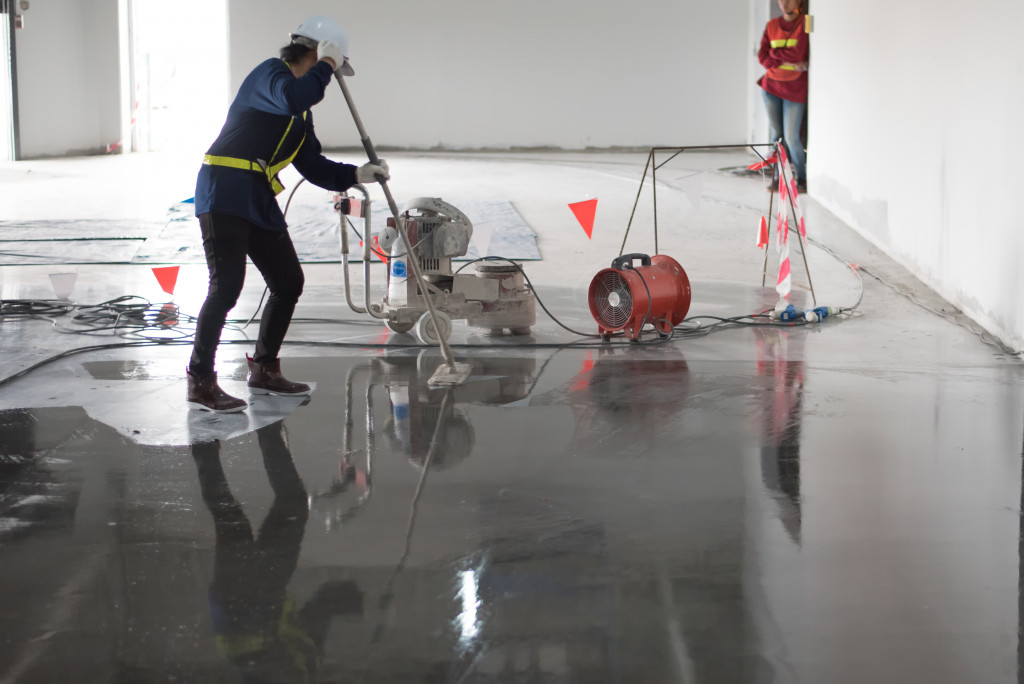• Regular maintenance and cleaning are necessary to keep the warehouse floor safe and secure.
• Apply protective coatings and use fork protectors to protect the floor from heavy equipment.
• Floor mats can also provide cushioning, help with slipping hazards, and reduce fatigue among workers.
• Be aware of signs of damage that may occur over time, such as cracks and discoloration, and make repairs as soon as possible.
Warehouses are essential for many businesses. From storing products and supplies to organizing the inventory, your warehouse is the backbone of your organization. That’s why protecting your warehouse floor from damage is so important. A damaged warehouse floor can lead to costly repairs and disrupt operations, hurting your bottom line in the long run. Here’s a look at ensuring your warehouse floor remains safe and secure.
Preventative Maintenance
Regularly inspecting and maintaining your warehouse floor is the most effective way to protect it from damage. Regular maintenance also helps identify potential hazards that could cause slips or falls, such as loose nails, uneven surfaces, or debris accumulated on the floor over time. Here are ways to ensure your warehouse floor is always in safe condition:
Clean and Inspect the Floor Regularly
Regularly means weekly or monthly. Clean the warehouse floor with a high-pressure washer to remove dust, dirt, and debris that can accumulate over time. Afterward, inspect the floor from head to toe for any signs of wear or damage. If dirt, such as mud and oil, is present every day, it should be cleaned daily.
Make Repairs Quickly
If you find any damaged or loose tiles on the floor, they should be replaced as soon as possible. Also, look for cracks or gaps between tiles and seals that allow dirt and water to enter the subflooring, causing damage over time.
Evaluate the Floor Surface
The floor surface should be evaluated to determine if it is suitable for the intended uses of your warehouse. For example, a concrete floor may not provide enough cushioning for heavy-duty equipment. Add cushioning or a protective coating layer to reduce wear and tear.
Protect the Floor from Heavy Equipment
Since you’re operating a warehouse, you most likely use heavy equipment like forklifts and pallet jacks. To protect the floor from damage caused by such machinery, here are your options:
Floor Coating Solutions
Applying a protective coating to your warehouse floor is another great way to protect it from damage. The coating can be applied in several layers depending on what kind of protection you need for the particular area of your warehouse. Whether it’s for a storage area, an entryway, or a loading dock area.
In addition to protecting against wear-and-tear and other hazards, coatings can add color or texture to enhance safety conditions by creating visual cues indicating areas where caution should be taken (such as near-loading docks). Moreover, some coatings are designed to resist chemical spills or water damage, which makes them especially helpful in areas where liquids are present.
Fork Protectors

These are rubber or metal guards attached to a forklift’s forks. Using fork protectors will provide extra cushioning and prevent damage from occurring when heavy loads are being moved. It will serve as an extra layer of protection for your warehouse floor, keeping it safe and secure no matter how heavy the load.
Floor Mats
Another solution for protecting your warehouse floor is investing in quality mats. Floor mats come in all shapes and sizes and range from rubber mats designed specifically for wet areas to heavy-duty mats made with materials like polypropylene that can absorb impacts without breaking down easily over time.
These mats are especially useful near busy entrances where people may enter with wet shoes during inclement weather conditions—this helps reduce slipping hazards while preventing dirt buildup on floors that may otherwise require more frequent cleaning sessions if left unprotected.
Mats also provide cushioning, which keeps feet comfortable when standing on hard surfaces for extended periods. This helps prevent fatigue among workers who may spend hours standing on their feet throughout their shift.
Be Aware of Damages

Over time, damages can occur to your warehouse floor even with the best preventative measures. If you notice any signs of damage, it’s important to take action immediately and make necessary repairs before more serious damages occur. Here are signs that your warehouse floor is beginning to show wear:
- Cracking, chipping, or peeling tiles.
- Uneven surfaces and loose nails.
- Discoloration of the floor surface due to chemical spills or water damage.
- Unusual noises when walking on the floor indicate shifting materials underneath.
These signs should not be ignored. Contact a professional to inspect the floor and make necessary repairs before it’s too late.
Protecting your warehouse floor is essential for keeping your business operational and running smoothly. Taking steps to prevent damage and making timely repairs will save you time, money, and the headache of dealing with bigger issues in the future.



